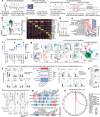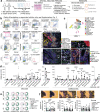Intestinal stroma guides monocyte differentiation to macrophages through GM-CSF
- PMID: 38409190
- PMCID: PMC10897309
- DOI: 10.1038/s41467-024-46076-3
Intestinal stroma guides monocyte differentiation to macrophages through GM-CSF
Abstract
Stromal cells support epithelial cell and immune cell homeostasis and play an important role in inflammatory bowel disease (IBD) pathogenesis. Here, we quantify the stromal response to inflammation in pediatric IBD and reveal subset-specific inflammatory responses across colon segments and intestinal layers. Using data from a murine dynamic gut injury model and human ex vivo transcriptomic, protein and spatial analyses, we report that PDGFRA+CD142-/low fibroblasts and monocytes/macrophages co-localize in the intestine. In primary human fibroblast-monocyte co-cultures, intestinal PDGFRA+CD142-/low fibroblasts foster monocyte transition to CCR2+CD206+ macrophages through granulocyte-macrophage colony-stimulating factor (GM-CSF). Monocyte-derived CCR2+CD206+ cells from co-cultures have a phenotype similar to intestinal CCR2+CD206+ macrophages from newly diagnosed pediatric IBD patients, with high levels of PD-L1 and low levels of GM-CSF receptor. The study describes subset-specific changes in stromal responses to inflammation and suggests that the intestinal stroma guides intestinal macrophage differentiation.
© 2024. The Author(s).
Conflict of interest statement
The authors declare no competing interests.
Figures





References
MeSH terms
Substances
Grants and funding
LinkOut - more resources
Full Text Sources
Molecular Biology Databases
Research Materials
Miscellaneous

